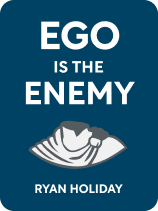

This article is an excerpt from the Shortform book guide to "Ego Is the Enemy" by Ryan Holiday. Shortform has the world's best summaries and analyses of books you should be reading.
Like this article? Sign up for a free trial here .
What is the sunk cost bias or the sunk cost fallacy? How does it affect decision-making?
The sunk cost bias or fallacy is a term that describes when someone keeps following through on an endeavor to justify previously invested resources. This tendency, which is related to loss aversion and status quo biases, is often the result of ongoing commitment and zeal towards a project.
Keep reading for more about the sunk cost bias.
What Is the Sunk Cost Bias?
In psychology, sunk cost bias or fallacy is a general tendency to follow through on an endeavor after we’ve already invested considerable energy and resources into it, even when the sunk costs outweigh the potential benefits.
We tend to fall into the trap of the sunk cost bias after we start seeing our work as an extension of our identity. When your ego interprets threats to your career as threats to your person—to your status, to your reputation, to your value in the eyes of others—it wants to fight this failure at all costs. It wants you to bet everything on an outlandish scheme or break the rules in a last-ditch attempt to fix your failures—even though these methods are very likely what got you into trouble in the first place and will probably only increase your difficulties.
Sometimes the wiser decision is to cut your losses and move on to the next project. Everyone makes mistakes—for example, people misjudge market demand, expand businesses too quickly, invest in bad stocks, or aim for unrealistic goals. Then, their businesses fail, their stock portfolios dive, or they spend years chasing a too-lofty target they’re not cut out for (for example, aiming to be a rock star with middling musical ability). To move past your losses so that they don’t define you for the rest of your career, you must control your ego, admit you messed up, and stop trying to fix these blunders. When faced with failure, determine honestly whether or not your errors are redeemable and ask yourself: Should I keep fighting for this? Or should I let this go? If I do, can I emerge from this with my dignity intact, so that I can fight for something else another day?

———End of Preview———
Like what you just read? Read the rest of the world's best book summary and analysis of Ryan Holiday's "Ego Is the Enemy" at Shortform .
Here's what you'll find in our full Ego Is the Enemy summary :
- How to resist your emotions so you can keep thinking clearly
- Why your passion may be preventing you from achieving your goals
- How to apply the philosophy of Stoicism for success as a leader







I never heard of this term. Thanks for the info!